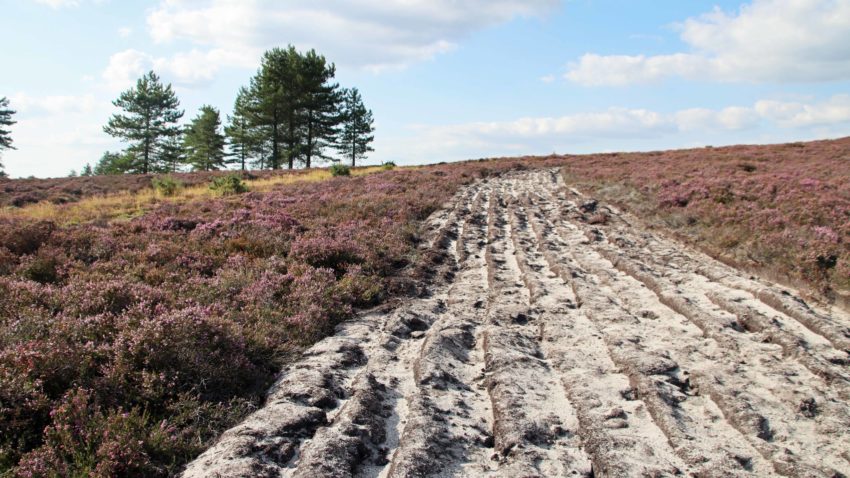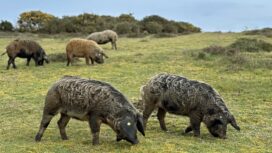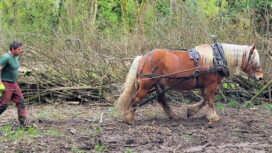An attempt to increase the number of endangered Purbeck mason wasps and heath tiger beetles on heathland near Arne in Purbeck has been hailed a success.
Spotting that these rare minibeasts were surviving on the sandy paths crossing the heath, the team at the National Trust cleared an adjacent strip of heathland, removing the heather and vegetation to create an exposed, sandy stretch of land.
This happened at the beginning of 2021. On their return to the area over the summer, they were delighted to discover evidence that the insects had migrated over to the new habitat areas.
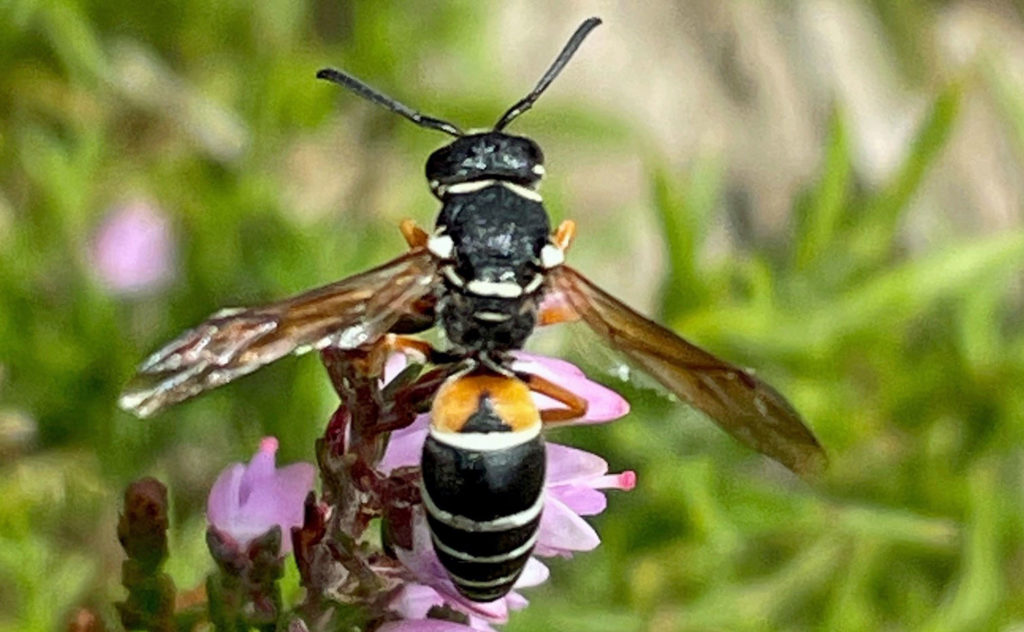
The striking Purbeck mason wasp
One of the UK’s rarest invertebrates
The Purbeck mason wasp, as the name suggests, can only be found in a few places in Purbeck. It is officially classified as endangered and is one of the rarest invertebrates in the UK.
The attractively patterned wasp demands a very specific habitat to cater for the dietary requirements of its young. It needs to feed its offspring the larvae of the heath button moth, which in turn need heather to survive.
To breed, the wasp burrows into the ground and requires exposed, sandy soil with some clay content, as well as access to open water to help build its nest. Fortunately the heathland near Arne can cater for its exacting demands!
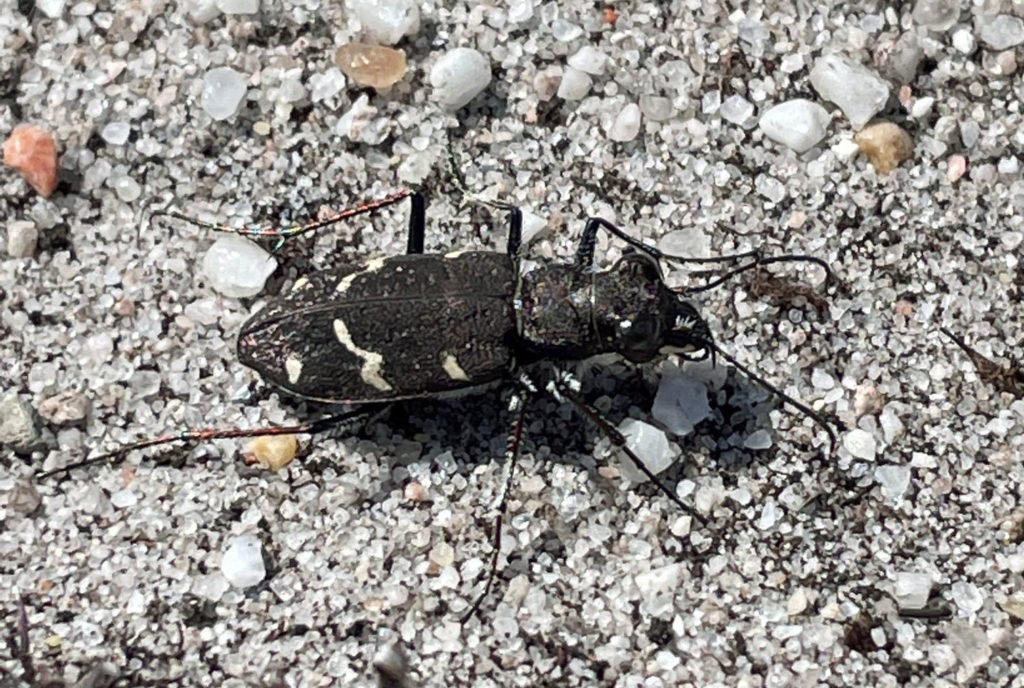
The heath tiger beetle – the UK’s largest tiger beetle, found in the newly created habitat
Very high threat of extinction
Likewise, the rare heath tiger beetle requires lowland heathland and can only be found in fragmented sites in Dorset, Hampshire, Sussex and Surrey. Its numbers have been in drastic decline, mainly due to habitat loss and currently it has a very high threat of extinction.
It is the UK’s largest tiger beetle with a brown body and distinct pale yellow markings. The larvae live in vertical burrows on open sandy soil, before developing into beetles over a two year life cycle.
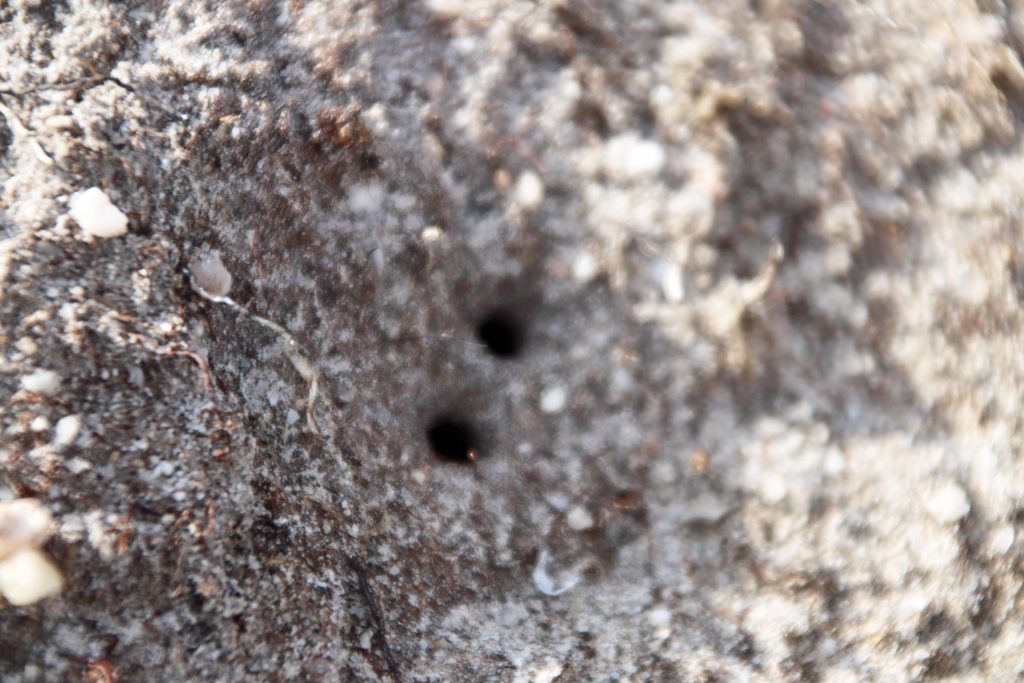
Burrows of the heath tiger beetle discovered in the newly created strip of sandy soil
Hidden gems within our landscape”
National Trust’s countryside manager for Purbeck, Mark Singleton said:
“It’s like having hidden gems within our landscape – to have the Purbeck mason wasp on our doorstep is really special. By ploughing a strip of heathland and exposing the sandy soil, we’re extending the range of these insects and the strip that we’ve done here has been brilliant!
“We have to trial these techniques and see what works but now with this success, we’re now thinking of where else we can do it. Often it takes ages to see any positive results but this has been very quick.”
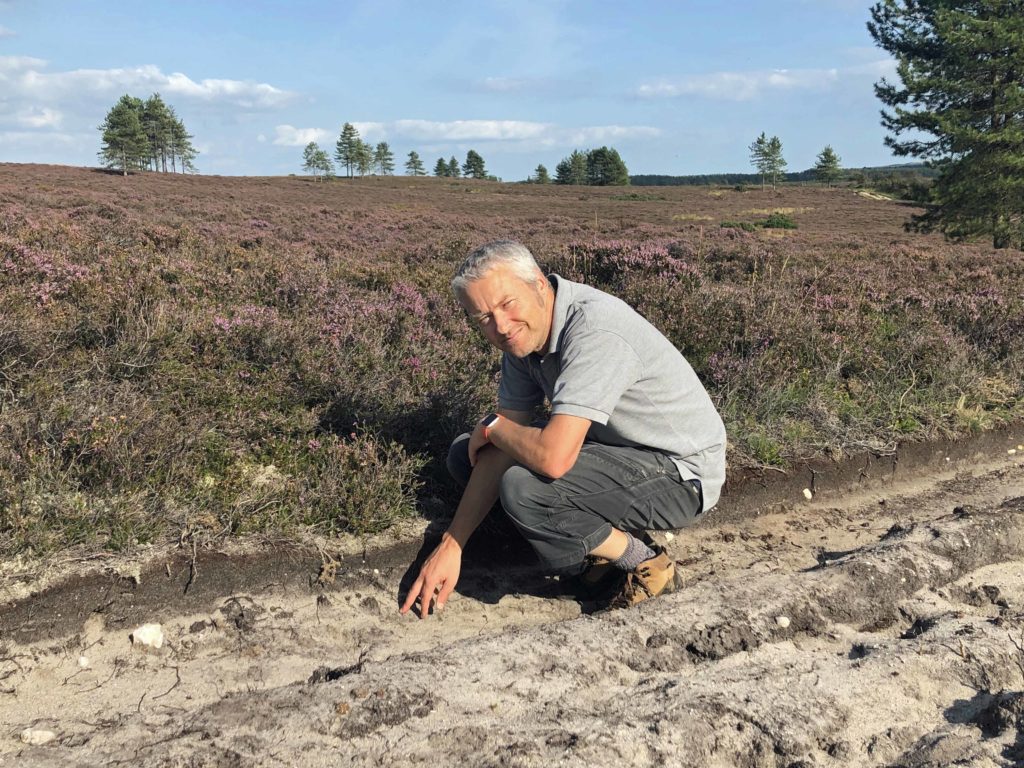
National Trust’s countryside manager for Purbeck, Mark Singleton examining the newly cleared heathland
One of the most wildlife-rich places in the UK
The Purbeck Heaths, stretching from Studland to Arne and across to Norden, was declared a national nature reserve (NNR) in 2020 and it is one of the most wildlife-rich places in the UK.
It is home to thousands of species including 450 that are listed as rare, threatened or protected, like the sand lizard, the Dartford warbler and the silver-studded blue butterfly.
Following the creation of the NNR, it received a government grant of half a million pounds to restore the habitat of lowland heathland.
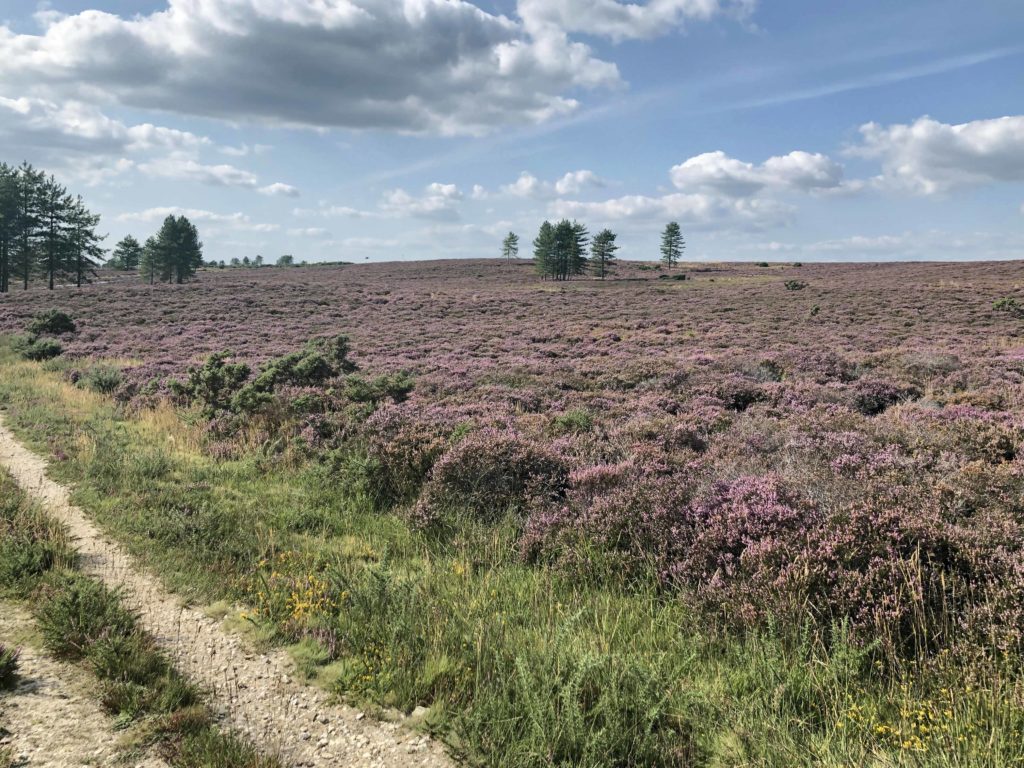
Across much of the Purbeck Heaths, it’s only the paths that provide the right exposed sandy habitat for many species
Thick vegetation has grown unchecked
Over the years the heathland has been left mainly undisturbed and this has allowed thick vegetation to grow unchecked forming a humus rich topsoil over the important sandy habitat.
In the past, it would have been grazed by animals like cattle, ponies and pigs, which would have naturally exposed the soil, churning it up with their feet and nibbling at the plants.
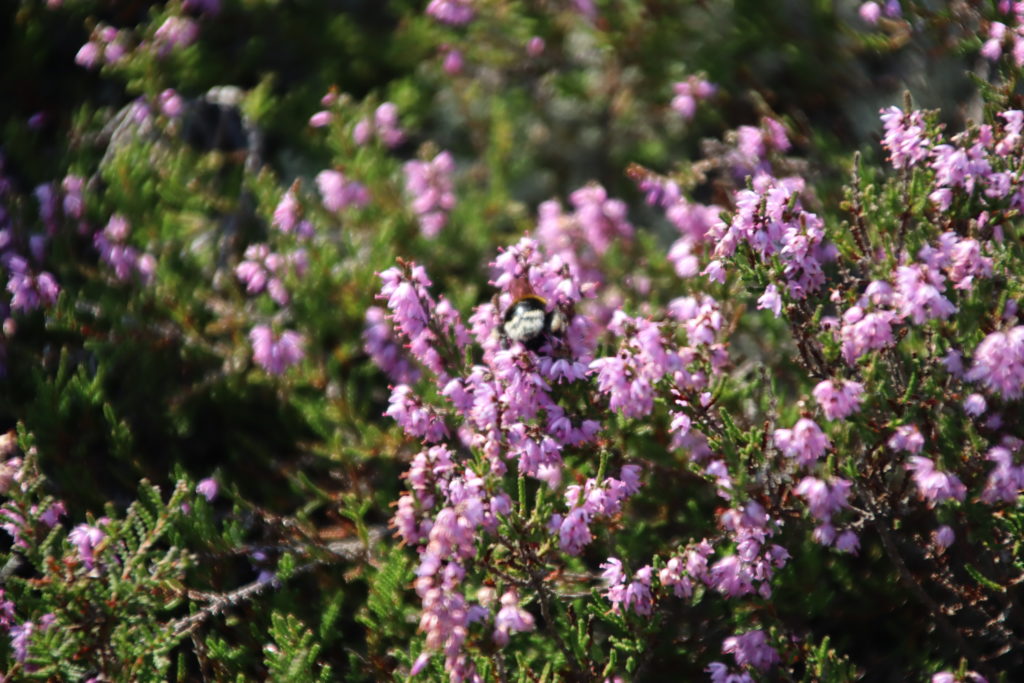
Heather is essential for the heath button caterpillar, which is the main source of food for the Purbeck mason wasp larvae
“Restore more natural processes”
Mark Singleton added:
“This time we used a tractor to clear the strip of heath, which is cost-effective and works, but we want to restore more natural processes to create habitats by bringing back the cattle and the pigs.
“That will be much more sustainable and we should be able to help more endangered species, not just the Purbeck mason wasp and the heath tiger beetle, but a wide range of heathland wildlife – that’s the aim!”
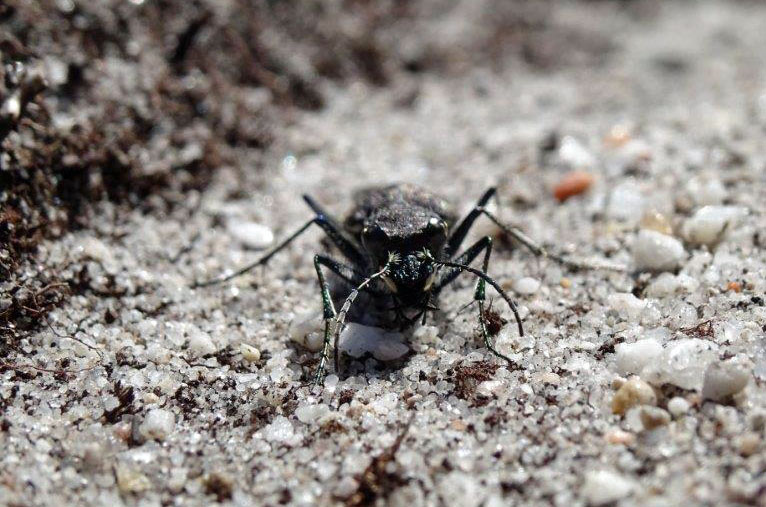
Settling into its new home – the heath tiger beetle
Further information
- Find out more about the Purbeck mason wasp and the heath tiger beetle
- Details about the Purbeck Heath NNR is on the National Trust website
